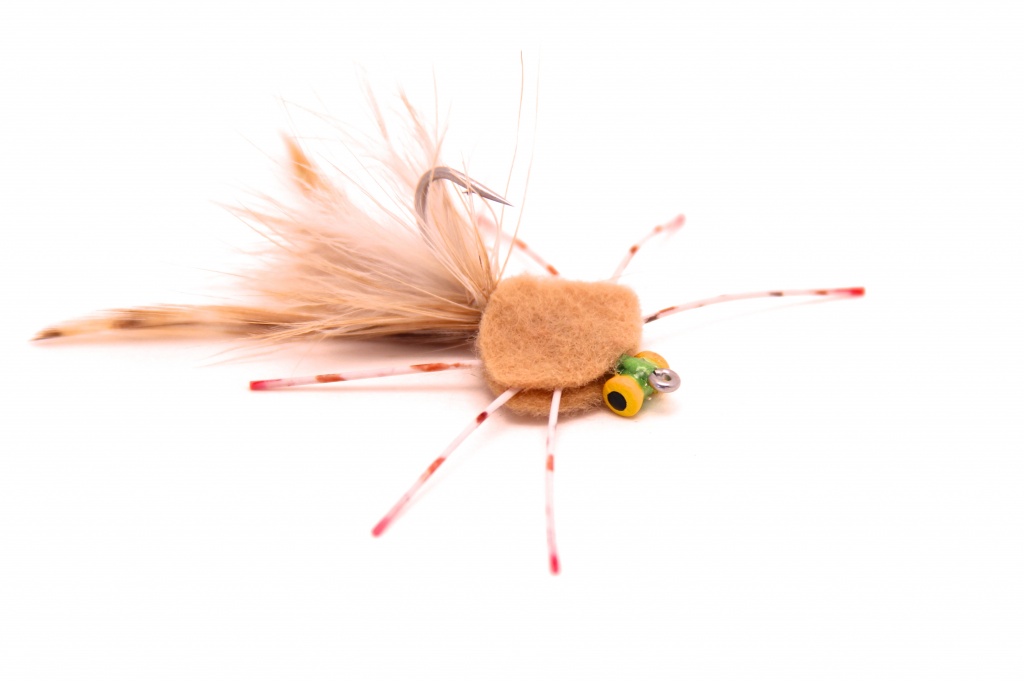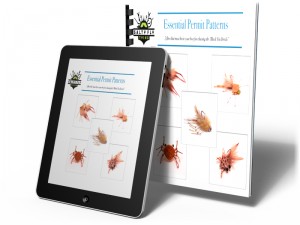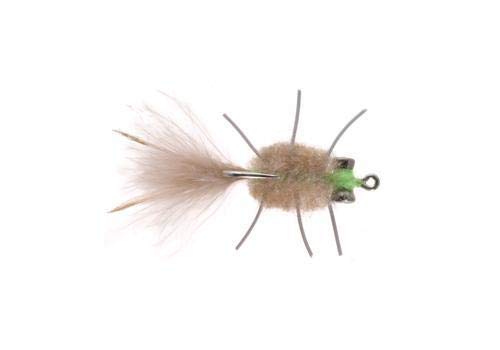This is the first installment of Essential Permit Patterns. The complete step-by-step instructions for tying this pattern can be downloaded here.
5 flies that must be in your box for chasing Permit, a.k.a “The Black Fin Devils” 100 page downloadable eBook of Essential Permit Patterns, illustrated with ultra-hi resolution step-by-step instructions.
Rag Head Crab Fly Tying Materials
- Hook: Diiachi 2546 or Similar Saltwater Hook
- Thread: Chartreuse 210 Denier flat-waxed Nylon
- Tail: 6-7″ Woolly Bugger Saddle Hackle Variant
- Eyes: 5/32 Dumbbell – Yellow
- Body: Tan Felt
- Legs: White Round Rubber Legs
- Misc.: Krystal Flash – Bonefish Tan
- Adhesive: Clear Cure Goo Hydro & E6000
About the Rag Head Crab Fly
Albert Einstein once said, the definition of “Insanity” is doing the same thing over and over again and expecting different results. Buy that definition; if attempting to catch a permit on fly isn’t lunacy it is most certainly a kindred spirit.
As you become earnest about checking permit off the “fish to catch on fly before I die” list, you will soon discover, like I did, that the countless hours perusing this baffling species can start to feel more like business than pleasure if your not careful. Conditions are typically very windy, and laying eyes on these phantoms with fins takes some intense conditioning. The lion’s share of your day is spent on the bow of the boat poised, fly in hand; ready and waiting. The opportunity to cast, if presented, is often momentary at best and can be easily squandered if even the slightest particular is overlooked. My crusade for permit has been an obsessively driven and often times maddening one, but I have gathered invaluable knowledge along the way. Spending time with some of the planets primo permit guides in extraordinary locations has been truly a gift as well as an in-depth education…and I am more than happy to pass along the hard lessons learned.
With respect to tying productive flies for permit, there are a few important factors or “abilities” that need to consider. First and foremost in my mind is “Castability”. This is a term I use for the fly’s aerodynamics. Even the most perfectly tied fly is useless if it fouls in the air, or doesn’t make it to the fish. More often than not, you are making 60-80 foot casts to super-spooky fish on the move. Wind will be a factor, so your needs to be somewhat streamlined and presented with limited false casts. Bushy or wide flat flies are very wind resistant, and extra long rubber legs frequently foul, and make casting in to the wind at great distances cumbersome. Simply put, you need to tie with materials that allow the fly to be cast easily at great distances.
The hook size, style and color that you choose is also crucial. Although I have a few flies tied up on 4’s in my box the vast majority are 2’s or even 1’s. I prefer a hook with a short shank and wide gap. This not only helps with hook ups, but a hook with a larger gap has more wire or surface area for the water to push against. The extra wire adds additional weight to the bottom of the fly, keeping it tracking true.
When choosing patterns to tie for permit, there is a dizzying array of choices out there. The first style of fly that comes to mind for most is crabs. One that has been historically productive is the Rag Head Crab. Blends of tans, browns, and olives are pretty standard color choices; however, I always tie up a few plain tan or white patterns, especially when I am traveling. This provides a blank canvas that can be easily colored with permanent marks to mimic a prey item you may encounter on the water.



